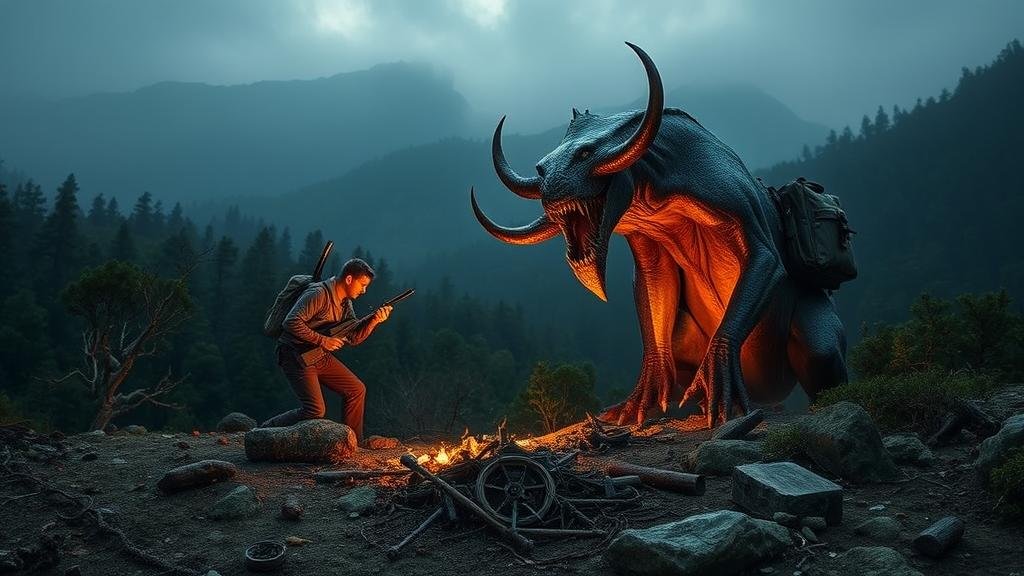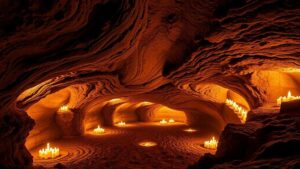Documenting firsthand accounts of explorers encountering cryptids.
Documenting Firsthand Accounts of Explorers Encountering Cryptids
In the annals of exploration and adventure, the search for the unknown often leads intrepid explorers into uncharted territories. Among the myriad phenomena they encounter, none are as tantalizing as cryptids–creatures whose existence has yet to be proven scientifically. Documenting these firsthand accounts not only enriches our understanding of folklore and regional myths but also offers a glimpse into the cultural fabric of the areas where these encounters occur. This article explores the significance of these accounts, notable explorers reminiscent of cryptid encounters, and the impact of storytelling in shaping our perception of these elusive beings.
The Importance of Firsthand Accounts
Firsthand accounts of explorers encountering cryptids serve several vital purposes. They provide sociological insights into how cultures interpret the unknown and contribute to the folklore surrounding these creatures. Plus, these accounts can reflect the encountered environments ecological and behavioral aspects, highlighting potential species yet to be classified. In essence, they bridge the gap between myth and reality, prompting inquiries that may lead to scientific investigations.
Notable Explorers and Their Encounters
Many explorers throughout history have claimed encounters with cryptids, contributing to the rich tapestry of cryptozoology. Below are notable figures and their documented experiences:
- David Thompson (1770-1857): A Canadian explorer, Thompson encountered what he cited as hairy giants while traversing the wilderness of British Columbia in the early 19th century. His journals reference these encounters in 1810, fueling local legends of Sasquatch.
- Henry Hudson (1570-1611): During his voyages, Hudson reported sightings of what appeared to be “strange creatures†in the waters off the coast of Newfoundland. Although vague, these descriptions are eerily reminiscent of the legendary sea serpent known as the Lusca.
- Frank Buckland (1826-1880): This British naturalist and explorer documented tales of the “Mokele-Mbembe†from the Congo River Basin. His expeditions in the late 19th century included interviews with local tribes, who described encounters with the creature resembling a long-necked dinosaur.
Scientific Scrutiny and Skepticism
Despite the allure of these accounts, its essential to approach them with a critical mindset. Many cryptid reports have been met with skepticism, primarily due to a lack of physical evidence and the tendency for folklore to evolve over time. For example, the legendary Loch Ness Monster of Scotland has been a topic of debate, with numerous interviews and purported sightings failing to yield satisfactory proof.
But, the skeptical lens does not negate the cultural significance of these narratives. They often enhance local tourism and stimulate interest in the natural environment, raising awareness of biodiversity. For example, the town of Shreveport, Louisiana, benefitted from the publicity generated by the recent resurgence of reports regarding the “Chupacabra,†a cryptid that has become an iconic symbol in cultural discussions around local myths.
Modern-Day Explorations and Technological Advances
In todays age, documenting encounters with cryptids has transformed significantly due to technological advancements. Explorers and enthusiasts utilize tools like drones, trail cameras, and audio recording devices to capture evidence more rigorously. For example, the popular YouTube channel Finding Bigfoot employs scientific methods and community-led searches to gather and analyze claims of Sasquatch sightings throughout the United States, showcasing a blend of old-world legend with modern investigative techniques.
Real-World Applications of Cryptid Research
The study of cryptids can have real-world implications, particularly in the field of conservation. By investigating reports and local myths, researchers can shine a spotlight on less-known species and their habitats. For example, the quest for the Yeti in the Himalayas has prompted scientists to explore the region more thoroughly, leading to valuable discoveries related to its unique ecosystem.
Conclusion: The Ongoing Quest for Knowledge
Documenting firsthand accounts of explorers who encounter cryptids serves as a bridge between folklore and scientific inquiry. While skepticism is essential, the significance of these narratives cannot be understated–they contribute to our understanding of cultural identities, inspire ecological conservation, and evoke a sense of wonder about the natural world. As technology continues to advance, the search for these elusive creatures persists, inviting both new explorers and seasoned researchers to delve deeper into the mysteries of our planet.
Ultimately, regardless of the veracity of claims, the exploration of cryptids encapsulates humanity’s enduring curiosity and quest for knowledge about the world around us–a pursuit that continues to captivate and inspire generations.



